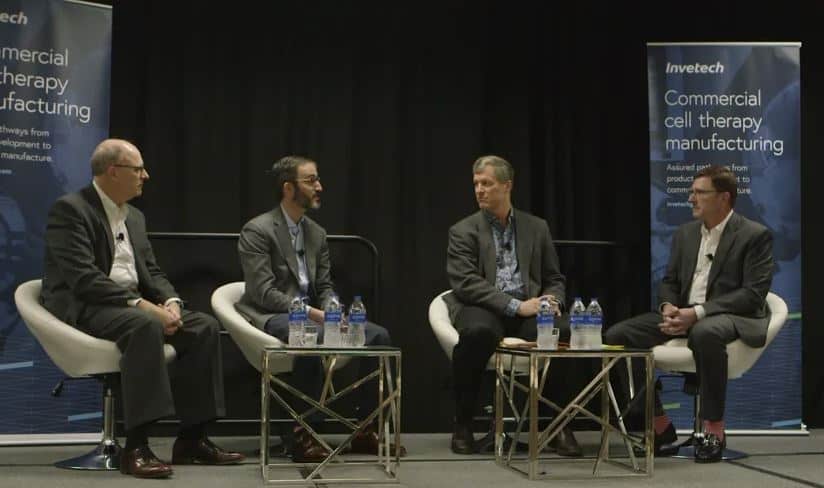Automation is at the heart of achieving efficiency and cost-effectiveness in cell therapy manufacturing; however, many therapy companies face barriers when it comes to introducing automation.
During a recent panel discussion at the Phacilitate conference in Miami, Invetech’s David Hodl opened the floor by highlighting that many cell therapy companies are still challenged with the ‘how’ and ‘when’, and not engaging automation from the very beginning because of funding limitations and process complexity.
“A common theme we hear is: ‘We need to first get our therapy approved, and then we’ll consider automation later’. With the approval of Yescarta and Kymriah in 2018, that ‘later’ has suddenly become ‘now’.”
The panel, chaired by David Hodl, and comprising of Steve Goodman (bluebird bio), Brian Hampson (Hitachi Chemical Advanced Therapeutics Solutions) and Randy Schweickart (Juno Therapeutics) discussed their vision for the coming era of industrialized cell therapy production.
You can watch a recording of the full discussion here or continue reading for some of the key highlights.

 As Head of Drug Product Manufacturing at bluebird bio, Steve Goodman oversees production of cellular therapies across the company’s portfolio of products and is accountable for the long-term technology strategy to expand access of these treatments to serve global patient requirements. Before joining bluebird, Steve was at GSK where he held a number of roles across research, development, manufacturing and supply chain. As Director of Manufacturing and Strategy for GSK’s CGT unit, he was responsible for the external manufacturing of the entire value chain to support GSK’s cellular therapies, and for defining and executing the vector manufacturing strategy. Steve joined GSK in 2002 following a Ph.D. and post-doctoral fellowship in organic synthetic chemistry at Harvard University.
As Head of Drug Product Manufacturing at bluebird bio, Steve Goodman oversees production of cellular therapies across the company’s portfolio of products and is accountable for the long-term technology strategy to expand access of these treatments to serve global patient requirements. Before joining bluebird, Steve was at GSK where he held a number of roles across research, development, manufacturing and supply chain. As Director of Manufacturing and Strategy for GSK’s CGT unit, he was responsible for the external manufacturing of the entire value chain to support GSK’s cellular therapies, and for defining and executing the vector manufacturing strategy. Steve joined GSK in 2002 following a Ph.D. and post-doctoral fellowship in organic synthetic chemistry at Harvard University.
